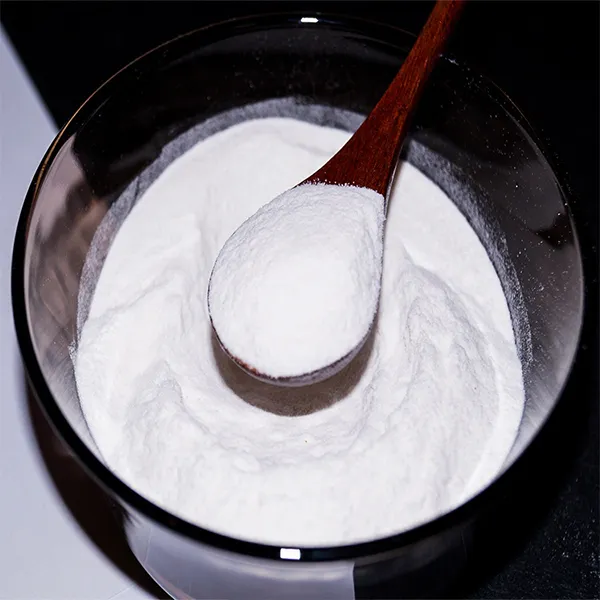Understanding Methylcellulose and Hydroxypropyl Methylcellulose (HPMC)
Methylcellulose and its derivative Hydroxypropyl Methylcellulose (HPMC) are two important cellulose ethers widely used in various industries due to their unique physical and chemical properties. These compounds play a significant role in pharmaceuticals, food, cosmetics, and construction applications. This article aims to explore the characteristics, applications, and significance of methylcellulose and HPMC.
What is Methylcellulose?
Methylcellulose is a cellulose derivative formed by the methylation of the hydroxyl groups in cellulose fibers. As a water-soluble polymer, it exhibits unique properties, such as being a thickener, emulsifier, stabilizer, and film-former. Methylcellulose is produced through a chemical reaction involving cellulose and methyl chloride in alkaline conditions, resulting in a versatile product that can be tailored for specific applications by adjusting its degree of substitution and viscosity.
Characteristics of Methylcellulose
One of the most notable characteristics of methylcellulose is its ability to form gel-like structures when heated and to revert to a liquid state upon cooling, a phenomenon known as thermoreversibility. This property makes methylcellulose a valuable ingredient in various formulations. Additionally, it is non-toxic, non-allergenic, and compatible with many other substances, making it an ideal choice for sensitive applications, particularly in the food and pharmaceutical industries.
Hydroxypropyl Methylcellulose (HPMC)
Hydroxypropyl Methylcellulose is a derivative of methylcellulose, where hydroxypropyl groups are introduced along with the methyl groups. This modification enhances its solubility in cold water and alters its physical properties, making HPMC more versatile than its parent compound. HPMC is also known for its favorable gel-forming attributes, which can be adjusted according to the specific needs of an application.
Applications of Methylcellulose and HPMC
methyl cellulos hpmc

1. Pharmaceuticals In the pharmaceutical sector, methylcellulose and HPMC are commonly used as excipients in drug formulations. They help control the release of active ingredients, improve the texture of suspensions, and act as binders in tablet formulations. Their ability to form gels is particularly advantageous in controlled-release systems.
2. Food Industry In food applications, methylcellulose and HPMC serve as thickening agents, stabilizers, and emulsifiers. They are often utilized in low-fat and gluten-free products to mimic the texture and mouthfeel provided by fats and gluten. Their emulsifying properties make them essential in products like dressings, sauces, and ice creams.
3. Cosmetics and Personal Care The cosmetic industry also benefits from these cellulose derivatives, as they are used in shampoos, lotions, and creams to improve texture and stability. Their film-forming ability provides a smooth application and enhances the overall sensory experience.
4. Construction In the construction industry, HPMC is utilized in cement-based products and as an additive for mortar, tile adhesives, and plasters. Its water-retention capacity and ability to improve adhesion and flexibility make it invaluable in construction applications.
Environmental Impact and Safety
Both methylcellulose and HPMC are considered environmentally friendly substances due to their biodegradable nature. They do not pose significant risks to human health when used appropriately, which further enhances their appeal across various industries. However, like any substance, safe handling practices should be adopted during production and application.
Conclusion
Methylcellulose and Hydroxypropyl Methylcellulose are vital ingredients across numerous sectors, facilitating various processes and enhancing product quality. Their unique properties, such as thermoreversibility, film-forming capability, and compatibility with other materials, make them indispensable in modern formulations. As industries increasingly seek sustainable and effective solutions, the importance of these cellulose derivatives is likely to grow, paving the way for innovative applications and further research into their potential. By understanding their characteristics and applications, industries can harness the power of methylcellulose and HPMC to create superior products that meet consumer demands sustainably and effectively.
-
A Comprehensive Guide to Methyl Ethyl Hydroxyethyl Cellulose: Applications and Industry InsightsNewsNov.24,2025
-
Understanding Methyl 2 Hydroxyethyl Cellulose: Uses, Benefits & Industry InsightsNewsNov.24,2025
-
Hydroxyethyl Methyl Cellulose HEMC: Industrial Uses, Benefits & Future TrendsNewsNov.23,2025
-
HEMC Cellulose: Versatile & Sustainable Industrial Polymer | YoungcelNewsNov.23,2025
-
Methyl Hydroxyethyl Cellulose: Versatile Building Block for Industry & SustainabilityNewsNov.23,2025
-
CAS 9032 42 2: Understanding Polyvinyl Alcohol's Impact on Industry & SustainabilityNewsNov.22,2025




